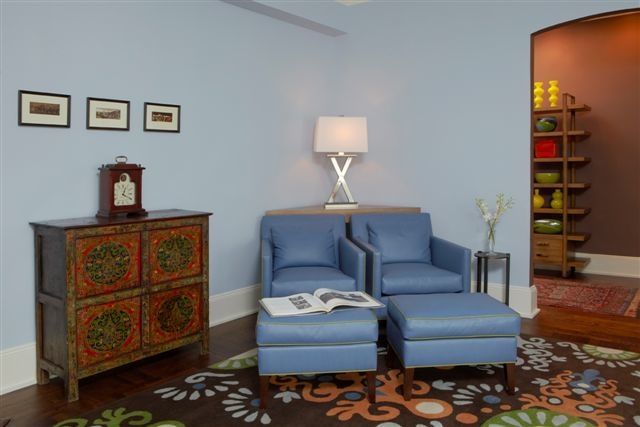Ask the Expert: East Meets East End

“Many of my design projects, both for the city and the country, incorporate some objects or interpretive décor from Far Eastern countries such as Japan, China, Tibet, and India,” says David Kaplan of David Kaplan Interior Design, LLC, who shares his insights on how becomes how to bring that decor to your home in the Hamptons.
The Question: How can I bring an Asian aesthetic to the interior design of a Hamptons beach house without it looking too “Eastern?”

The Answer from David Kaplan of David Kaplan Interior Design, LLC: Simply crafted objects made from ‘old world’ techniques can work amazingly well in either contemporary or traditional environments with their organic quality while more intricately detailed items can add a touch of elegance.
Oriental carpets and Chinese pottery and porcelain vases and lamp bases and objects like foo dogs have continued to appeal to homeowners for several generations but tend to be more formal. For the more casual beach house, I prefer pairing more subtle Asian objects with sisal and wool texture carpets.
Buddha images and other traditional ceremonial objects have found their way inside and outside of Western homes (including the entryway, the garden and around the pool), mainly as pure sculptural objects. Interestingly, they tend to automatically evoke a sense of serenity and grounding to any space, even in the most non-religious context.
I have utilized custom designed shoji style panels in place of more standard doors for room dividers, closets, wardrobes and china cabinets. The panel materials can vary from traditional rice paper to other more durable translucent and solid materials.
Tibetan chests, with their hand-painted decoration, are a good option where space is an issue as they are typically shallower. Indian camel bone drawer chests which are made in neutral color (black/natural, brown/natural, gray/natural) as well as greens, reds, and pastel colors to work with just about any color scheme.
 For the master bedroom in my own home, instead of standard night tables, I purchased a Japanese tansu ‘chest-on-chest’ cabinet made of kiriwood, which resembles classic light American pine. I separated the slightly varied upper and lower components, adding a hint of interesting asymmetry, and since they are also slightly different in height I had a pair of bases fabricated to compensate so that I could end up with an ideal finished height and top them off with a pair of table lamps.
For the master bedroom in my own home, instead of standard night tables, I purchased a Japanese tansu ‘chest-on-chest’ cabinet made of kiriwood, which resembles classic light American pine. I separated the slightly varied upper and lower components, adding a hint of interesting asymmetry, and since they are also slightly different in height I had a pair of bases fabricated to compensate so that I could end up with an ideal finished height and top them off with a pair of table lamps.
A low single panel screen divider, hand painted with an abstract landscape, is set on top of the mantel on low stands in the living room, and provides an art focal point. Originally exported from Japan, it was found at a local antiques gallery in the Hamptons.
On a recent trip to India my partner and I purchased several art objects for our house, including a “miniature” painting on silk, a pair of small solid wooden windows, and an antique textile. Yet, with careful placement, the sense of Asian influence in our Cape Cod shingled house remains subtle.
 Folding screens may be found in a variety of style, sizes and price range depending on their age, condition, and decorative technique. Open wood “windows” can add a three dimensional quality.
Folding screens may be found in a variety of style, sizes and price range depending on their age, condition, and decorative technique. Open wood “windows” can add a three dimensional quality.
For the most inventive interpretations, I have collaborated on creating custom Asian-inspired furniture with carpenters, artisans and specialty finish artists.
Have your own questions about bringing an Asian aesthetic to your home or another interior design project? You can contact David Kaplan at David Kaplan Interior Design, LLC at 212-462-4329 or online at www.dkidllc.com.



